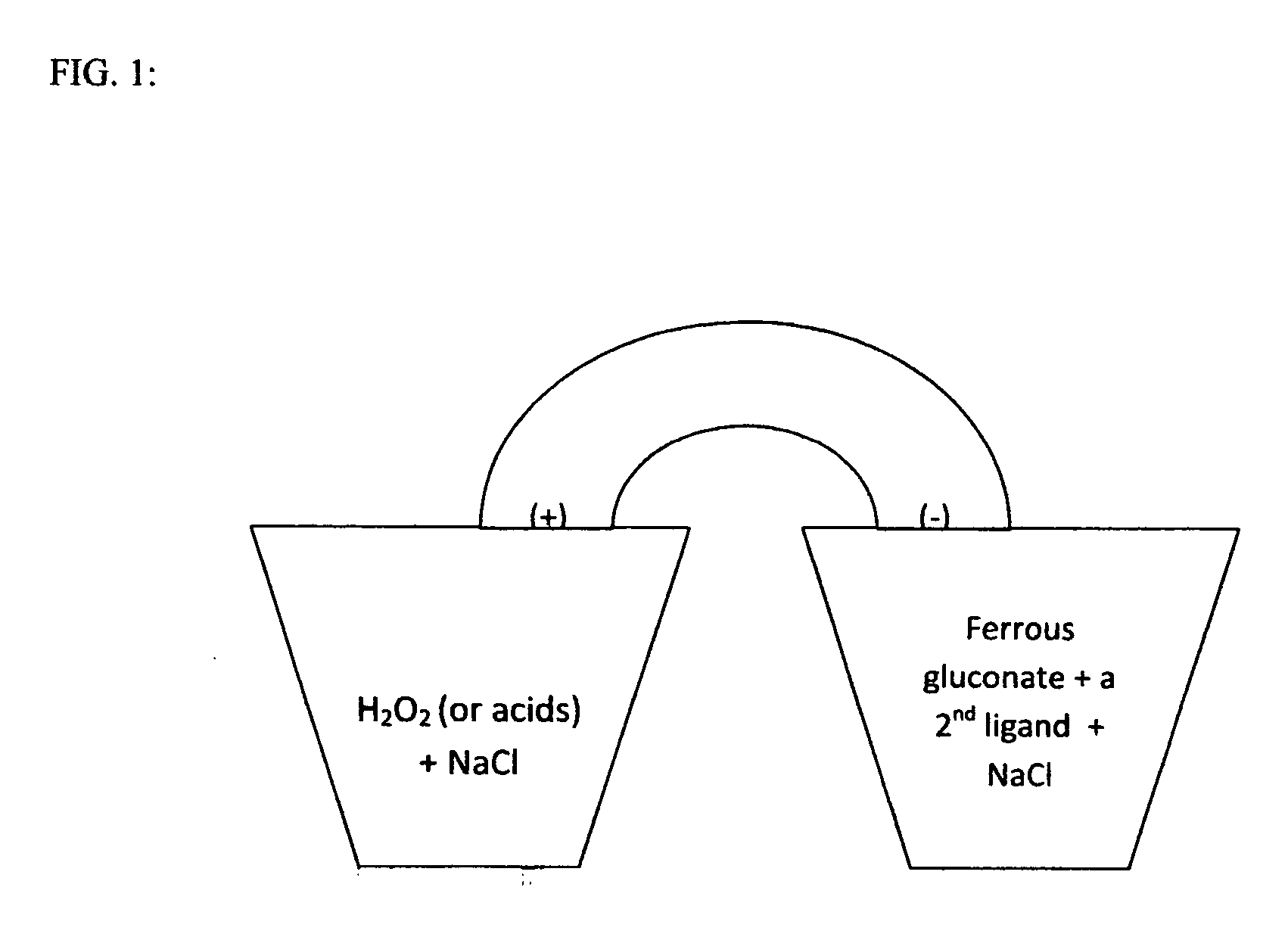Water based biological and photochemical batteries
a biological and photochemical battery technology, applied in the field of water-based biological and photochemical batteries, can solve the problems of insufficient voltage and current, ligand loss quickly, octahedron structure may not be formed perfectly, etc., and achieve the effects of increasing voltage and current, powering the battery, and increasing curren
- Summary
- Abstract
- Description
- Claims
- Application Information
AI Technical Summary
Benefits of technology
Problems solved by technology
Method used
Image
Examples
Embodiment Construction
[0003]The biological batteries consist of hydrogen peroxide or an acid in the cathode and ferrous gluconate in the anode (FIG. 1). Ferrous gluconate is mixed with compounds such as acetaminophen, dextromethrophan, guaifenesin, caffeine, or EDTA (FIG. 2). These molecules serve as the second ligand chelating with ferrous gluconate and can replace the expensive and labile proteins / peptides that were mentioned earlier. The anode material may be suspended in an aqueous paste of wax, cellulose, starch, stearate, polyethylene glycol, etc. Sodium chloride is the electrolyte in this battery presentation while other salts such as NH4Cl and NaI can also be used. The electrolyte serves to increase conductivity and reduce resistance. The electrical power can be increased by using higher concentrations of the chemicals. The voltage of the battery is much lowered if using ferrous gluconate or the ligandsalone in the anode. The synergetic effect of the mixture can be attributed to the change in the...
PUM
 Login to View More
Login to View More Abstract
Description
Claims
Application Information
 Login to View More
Login to View More - R&D
- Intellectual Property
- Life Sciences
- Materials
- Tech Scout
- Unparalleled Data Quality
- Higher Quality Content
- 60% Fewer Hallucinations
Browse by: Latest US Patents, China's latest patents, Technical Efficacy Thesaurus, Application Domain, Technology Topic, Popular Technical Reports.
© 2025 PatSnap. All rights reserved.Legal|Privacy policy|Modern Slavery Act Transparency Statement|Sitemap|About US| Contact US: help@patsnap.com



